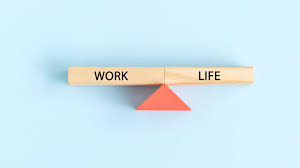In today’s fast-paced and demanding world, achieving a work-life balance has become increasingly challenging. The constant juggle between professional responsibilities and personal commitments can take a toll on one’s well-being. However, adopting effective strategies can help individuals strike a harmonious balance between work and life. In this article, we will explore 10 key strategies to help you achieve and maintain a healthier work-life balance.
- Set Clear Boundaries:
Establishing clear boundaries between work and personal life is crucial. Define specific work hours and adhere to them as much as possible. Avoid checking work emails or taking work-related calls during personal time. Clear boundaries help prevent work from encroaching into your personal space, allowing for better separation and balance. - Prioritize Tasks:
Effective time management is essential for achieving a work-life balance. Prioritize tasks based on their urgency and importance. Identify high-priority tasks at work and address them first. Learn to delegate non-essential tasks to free up time for more significant personal activities. By organizing your workload, you can reduce stress and create room for a healthier personal life. - Learn to Say No:
While it’s important to be a team player and contribute to your work environment, it’s equally crucial to know when to say no. Overcommitting yourself can lead to burnout and negatively impact your personal life. Assess your workload realistically and decline additional responsibilities when necessary to maintain a manageable work-life balance. - Embrace Flexibility:
Seek flexibility in your work arrangements whenever possible. Many employers now offer flexible working hours or remote work options. Negotiate with your employer to find a schedule that suits both your professional and personal needs. Embracing flexibility can lead to improved overall well-being and a more sustainable work-life balance. - Schedule Regular Breaks:
Taking breaks throughout the workday is essential for maintaining focus and productivity. Use breaks to step away from your desk, stretch, and relax. Incorporate short walks or breathing exercises to recharge your energy levels. Regular breaks can enhance your ability to handle stress and contribute positively to your mental and physical well-being. - Invest in Self-Care:
Make self-care a priority in your daily routine. Allocate time for activities that bring you joy and relaxation, whether it’s exercise, meditation, reading, or spending time with loved ones. Taking care of your physical and mental health is crucial for sustaining a work-life balance and preventing burnout. - Communication is Key:
Open and honest communication with your employer, colleagues, and family is essential. Discuss your work commitments and personal priorities with your supervisor to ensure understanding and support. Transparent communication fosters a supportive work environment and enables you to navigate challenges more effectively. - Establish Tech-Free Zones:
In today’s digital age, constant connectivity can blur the lines between work and personal life. Designate certain areas or times in your home as tech-free zones, where you disconnect from work-related devices. This creates a mental separation and allows you to fully engage in personal activities without the distraction of work-related notifications. - Set Realistic Goals:
Set achievable and realistic goals both at work and in your personal life. Unrealistic expectations can lead to stress and disappointment. Break down larger tasks into smaller, more manageable steps, allowing for a sense of accomplishment along the way. Realistic goal-setting contributes significantly to a healthier work-life balance. - Regularly Reassess and Adjust:
Work-life balance is a dynamic concept that requires ongoing evaluation and adjustment. Regularly reassess your priorities, workload, and personal commitments. Be willing to make necessary changes to maintain balance and align with your evolving needs. Flexibility and adaptability are key to sustaining a fulfilling work-life equilibrium.
Conclusion:
Achieving a work-life balance is a continuous journey that requires intentional effort and commitment. By implementing these key strategies, individuals can create a framework that promotes both professional success and personal well-being. Remember, a healthy work-life balance is not just a luxury; it’s a fundamental aspect of leading a fulfilling and sustainable life.

